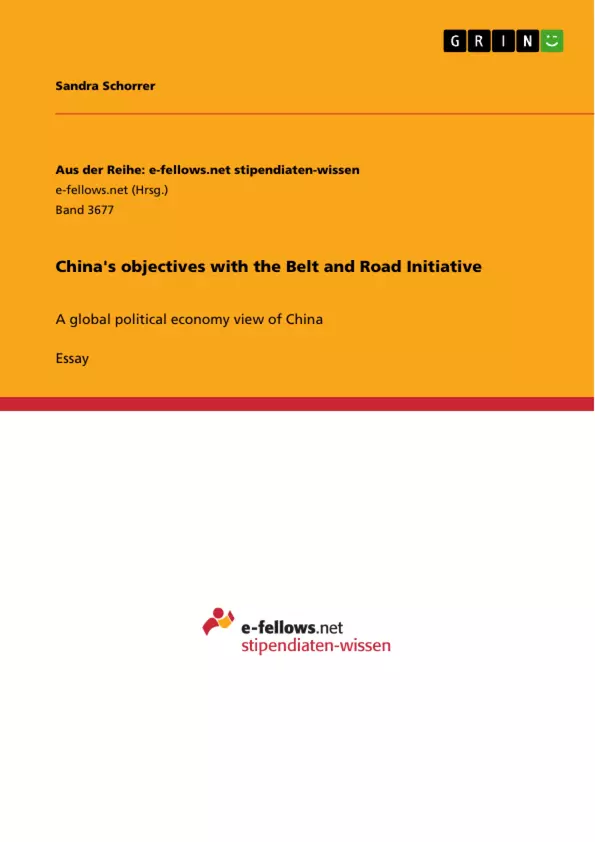What are the objectives behind China's promotion and development of the Belt and Road Initiative? Answering this question is the main purpose of this essay which is based on an international political economy (IPE) approach to bridge geoeconomic and geopolitical perspectives
The ancient Silk Road served as vast trade network between China, other Asian countries, Europe and the Middle East for more than 2,000 years. By launching the Belt and Road Initiative (BRI) - comprising the Silk Road Economic Belt, the 21st Century Maritime Silk Road and a Digital Silk Road - China has revived this concept in 2013.
While some scholars and politicians welcome the BRI as China’s contribution to international public goods and international development, others reject it claiming that its objectives are not transparent or, that it is a tool for China to leverage its massive economic resources for geostrategic interests and to facilitate business for its state-owned enterprises. Thus, is the BRI´s main objective to undermine the US-led world order? Is it driven by altruism aimed on facilitating economic growth in less developed countries? Is it the Chinese way to deal with domestic economy challenges? Or is it just an empty slogan?
Inhaltsverzeichnis (Table of Contents)
- Introduction
- Domestic objectives
- Global objectives
- Conclusion
Zielsetzung und Themenschwerpunkte (Objectives and Key Themes)
This essay examines the objectives behind China's promotion and development of the Belt and Road Initiative (BRI) through an international political economy (IPE) approach. It aims to bridge geoeconomic and geopolitical perspectives to better understand Beijing's intentions, assess the BRI's impact on the international system, and provide policy recommendations for global leaders.
- The BRI's role in China's domestic and global economic strategies.
- The BRI's impact on regional and global power dynamics.
- The BRI's potential to foster South-South cooperation and international development.
- The BRI's relationship with the US-led world order and the US "Pivot to Asia" strategy.
- The BRI's impact on the international system and global governance.
Zusammenfassung der Kapitel (Chapter Summaries)
- Introduction: This chapter introduces the BRI, its historical context, and its objectives according to China's official statements. It highlights the contrasting perspectives on the BRI, ranging from its potential benefits to its potential risks and geostrategic implications.
- Domestic objectives: This chapter explores the domestic drivers behind the BRI, including China's need to address overcapacity, manage its massive foreign exchange reserves, and create new investment opportunities. It also discusses the BRI's role in China's broader economic development strategy and its potential to promote domestic stability.
- Global objectives: This chapter examines the BRI's global objectives, including its potential to strengthen China's economic and political influence, foster South-South cooperation, and promote international development. It also explores the BRI's relationship with the US-led world order and the potential for geopolitical competition.
Schlüsselwörter (Keywords)
The key terms and concepts explored in this essay include: Belt and Road Initiative (BRI), Silk Road Economic Belt, 21st Century Maritime Silk Road, Digital Silk Road, international political economy (IPE), geoeconomic and geopolitical perspectives, China's economic development strategy, South-South cooperation, US-led world order, US Pivot to Asia strategy, global governance, international development, and global power dynamics.
- Quote paper
- Sandra Schorrer (Author), 2020, China's objectives with the Belt and Road Initiative, Munich, GRIN Verlag, https://www.grin.com/document/968102



